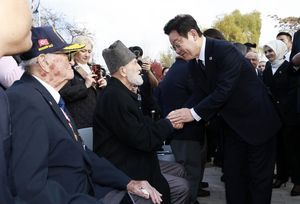
The U.S. Air Force’s Rivet Joint (RC-135W) reconnaissance aircraft has flown over South Korea.
According to a report by Dong-A Ilbo, the Rivet Joint conducted an extended surveillance mission over North Korea after flying to the Korean Peninsula.
The report states that one U.S. Air Force Rivet Joint aircraft flew from Kadena Air Base in Okinawa, Japan, to southern South Korea on the first day of the joint Ulchi Freedom Shield (UFS) exercise between South Korea and the U.S. The aircraft then flew back and forth along the Military Demarcation Line (MDL) for an extended period to monitor North Korea before returning to base. Multiple military aircraft tracking websites confirmed this information.
The Rivet Joint is a large reconnaissance aircraft operated by the U.S. Air Force. It can fly anywhere worldwide to collect electronic and communication intelligence from target areas. It is beneficial for monitoring North Korea’s missile launch activities because it can detect signals before a missile is launched.
The Rivet Joint can detect and analyze electronic signals from hundreds of kilometers away, functioning like a giant telescope. It can eavesdrop on enemy communications, analyze radar signals to determine their location and capabilities, and even detect unique electronic patterns during missile launches, providing early warning signs.
The Rivet Joint frequently appears over the Korean Peninsula due to North Korea’s missile development and launch threats. Every time North Korea develops or tests new missiles, the Rivet Joint is deployed to monitor the situation from South Korean airspace. The intelligence gathered by the Rivet Joint is shared in real-time with the military authorities of both the U.S. and South Korea to strengthen preparedness against North Korean threats.
A military source told Dong-A Ilbo, “North Korea may conduct a ballistic missile test targeting South Korea or U.S. forces in Japan in response to the UFS exercise, and the Rivet Joint is likely focused on monitoring such potential provocations.”
Deploying the U.S. Air Force’s key reconnaissance aircraft on the first day of the UFS exercise also signals a warning message to North Korea: “We are watching you.” It may also discourage North Korea from testing intercontinental ballistic missiles that could disrupt the U.S. political landscape during the presidential election season.











Most Commented